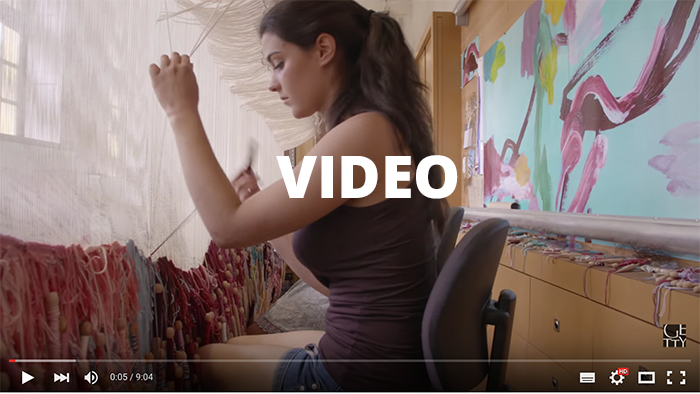WOVEN GOLD: Tapestries of LOUIS XIV
December 15, 2015 – May 1, 2016
GETTY CENTER
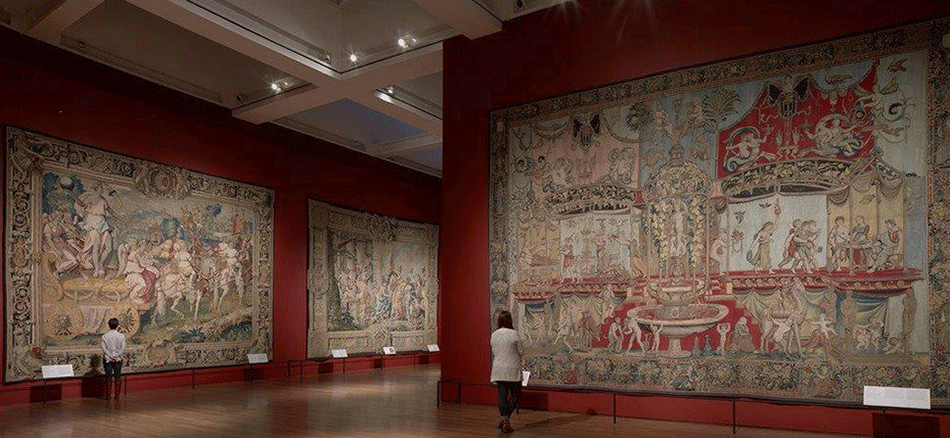
Woven Gold: Tapestries of Louis XIV exhibition. Gallery view of J. Paul Getty Museum, the Getty Center.
The art of tapestry weaving in France blossomed during the reign of Louis XIV (r. 1643-1715).
Three hundred years after the death of France’s so-called “Sun King,” the J. Paul Getty Museum will showcase 14 monumental tapestries from the French royal collection, revealing the stunning beauty and rich imagery of these monumental works of art.
Louis XIV
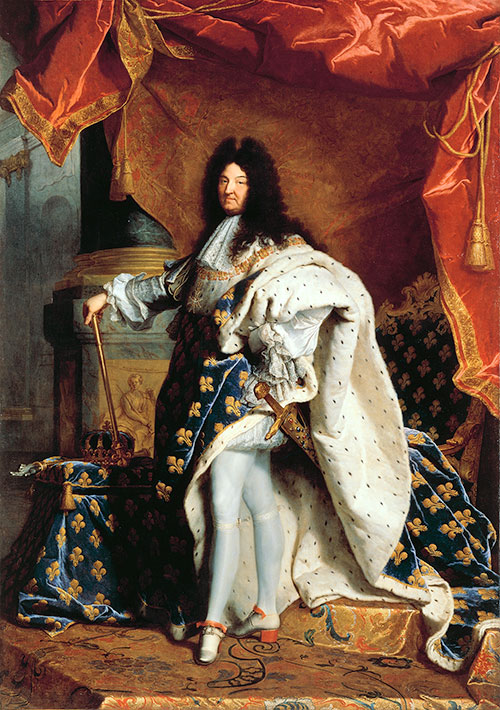 When Louis XIV assumed independent rule at the age of 22, the tapestry holdings of the Crown were exceptionally rich and splendid.
When Louis XIV assumed independent rule at the age of 22, the tapestry holdings of the Crown were exceptionally rich and splendid.
Nevertheless, Louis’s own taste and aspirations for the monarchy prompted him to augment the collection, and his agents actively pursued the great 16th- and 17th-century sets of tapestries as they became available on the art market, favoring those after the designs of Raphael.
Through these valuable acquisitions, Louis XIV effectively brought the art of Renaissance Rome to the heart of the French realm.
In the hierarchy of court art, colorful and glittering tapestries–handwoven after designs by the most renowned artists were the ultimate expression of status, power, taste, and wealth.
The exhibition feature monumental tapestries ranging in date from about 1540 to 1715 and created in weaving workshops across northern Europe as well as one modern tapestry.
Painting: Louis XIV by Hyacinthe Rigaud (1701)
Louis XIV as Heir
In 1666 the royal inventory of tapestries comprised 44 extremely valuable sets, woven with profuse quantities of precious metal-wrapped thread. This collection of illustrious but aging medieval weavings had been complemented by the additions of highly important Renaissance hangings acquired by François I. Until about 1600, the most prestigious sets, especially the more costly ones portraying human figures, came from the powerful network of well-financed tapestry merchants in Brussels and Antwerp.
At that time, the French tapestry industry was weaker and less efficient than its northern competition. From the turn of the 17th century, however, King Henri IV (reigned 1589-1610) built up the domestic industry in an attempt to turn the luxury textile market to the kingdom’s advantage. Parisian workshops began to flourish and, increasingly, more French weavings entered the Crown’s collection. A half-century later, Louis XIV, grandson of Henri IV, inherited this rich patrimony.
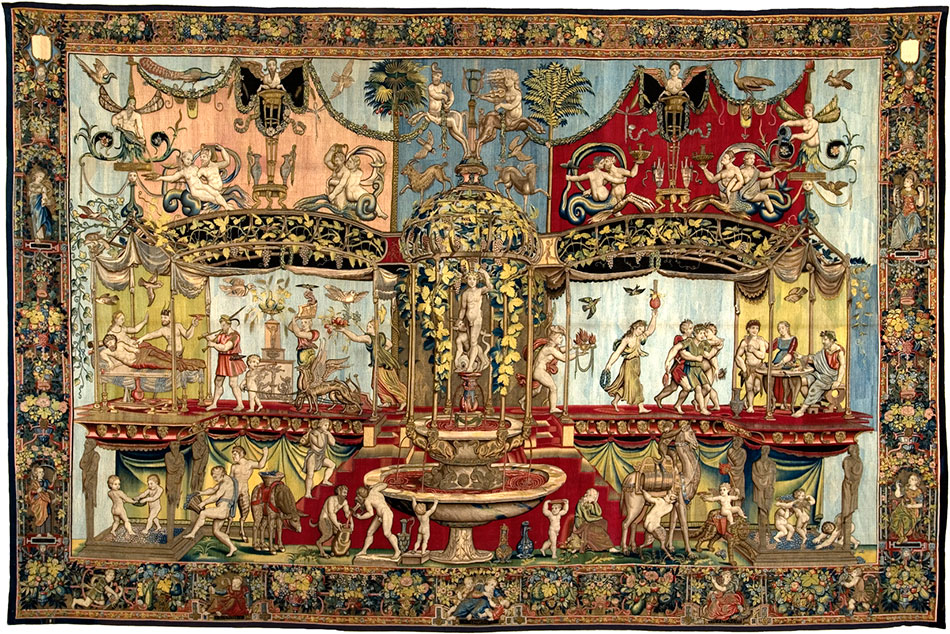
Triumph of Bacchus, about 1560. Design overseen by Raphael (Raffaello Sanzio, Italian, 1483–1520), about 1518–1519. Design and cartoon by Giovanni da Udine (Italian, 1487–1564) in collaboration with other artists from the workshop of Raphael, about 1518–1520. Brussels workshop of Frans Geubels (Flemish, flourished 1545–1585) Wool, silk, and gilt metal-wrapped thread. H: 495 x W: 764 cm (194 7/8 x 300 13/16 in.) Le Mobilier National, Paris. Image © Le Mobilier National. Photo by Lawrence Perquis. EX.2015.6.4
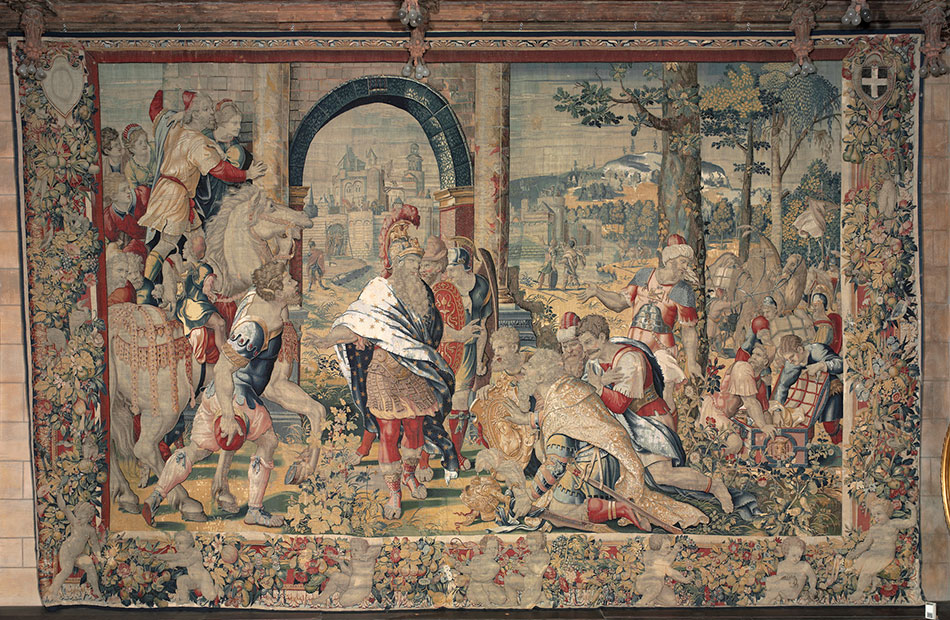
The Reception of the Envoys from Carthage. From The Story of Scipio. Design in the style of Giulio Romano (Italian, about 1499– 1546), possibly as early as the 1530s, no later than 1548/55. Border design incorporating motifs by Tommaso Vincidor (Italian, died 1534/36) Brussels, attributed to the workshop of the Dermoyen family, possibly as early as 1544, no later than 1548/55. Wool and silk. Hearst San Simeon State Historical Monument, San Simeon, California, inv. 529-9-93. Catalogue number 4a. EX.2015.6.26
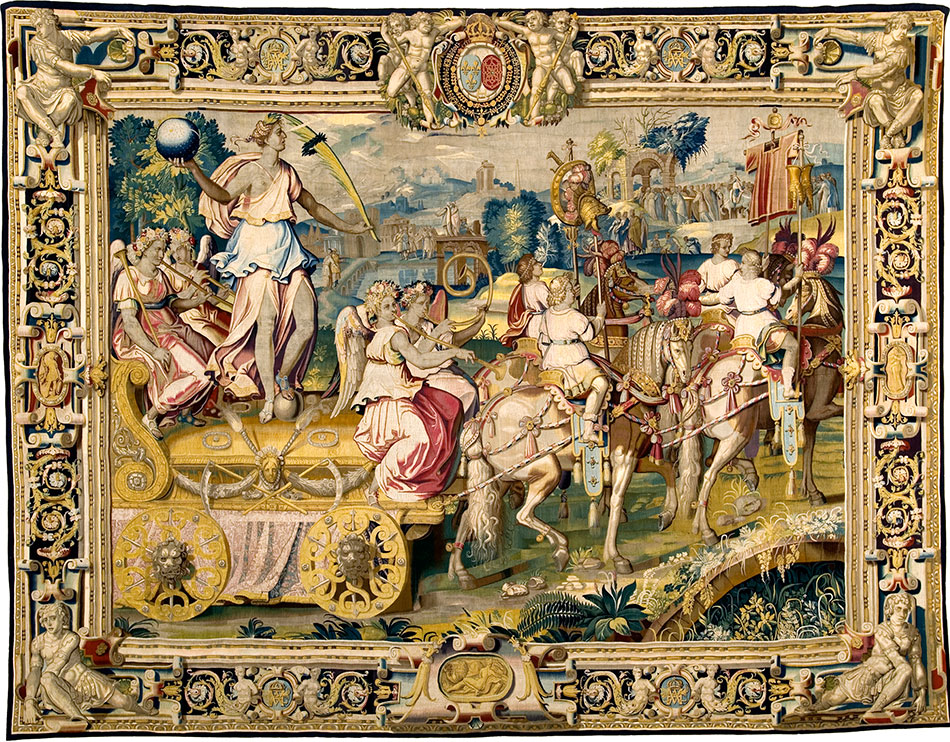
The Chariot of Triumph Drawn by Four Piebald Horses (also known as The Golden Chariot), about 1606–1607. Design by Antoine Caron (French, 1521–1599), about 1563–1570. Border design attributed to Henri Lerambert (French, about 1540/1550–1608), about 1606–1607. Cartoon by Henri Lerambert (French, about 1540/1550–1608), about 1606–1607. Louvre workshop of Maurice I Dubout (French, died 1611) Wool and silk. H: 483 x W: 614 cm (190 3/16 x 241 3/4 in.) Le Mobilier National, Paris Image © Le Mobilier National. Photo by Lawrence Perquis. EX.2015.6.5
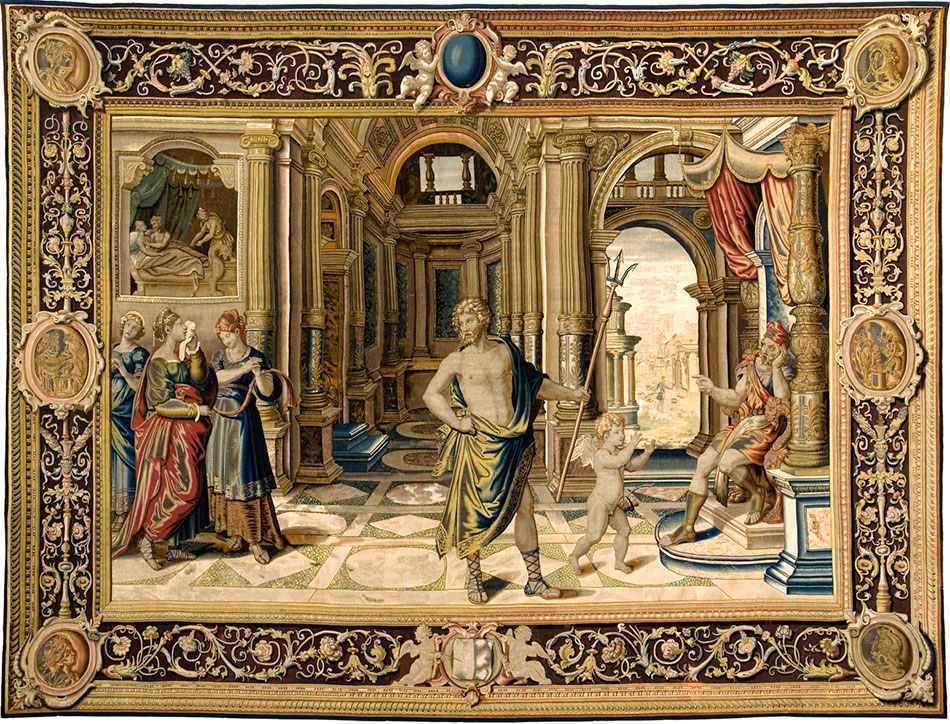
Neptune and Cupid Plead with Vulcan for the Release of Venus and Mars, about 1625–1636. Design by an Unknown Northern Artist. Border design by Francis Cleyn (German, 1582–1658), about 1625–1628. Mortlake Tapestry Works (English, founded 1619) under the ownership of Sir Francis Crane (English, about 1579–1636) Wool, silk, and gilt metal-wrapped thread. H: 440 x W: 585 cm (173 1/4 x 230 5/16 in.) Le Mobilier National, Paris Image © Le Mobilier National. Photo by Lawrence Perquis. EX.2015.6.3
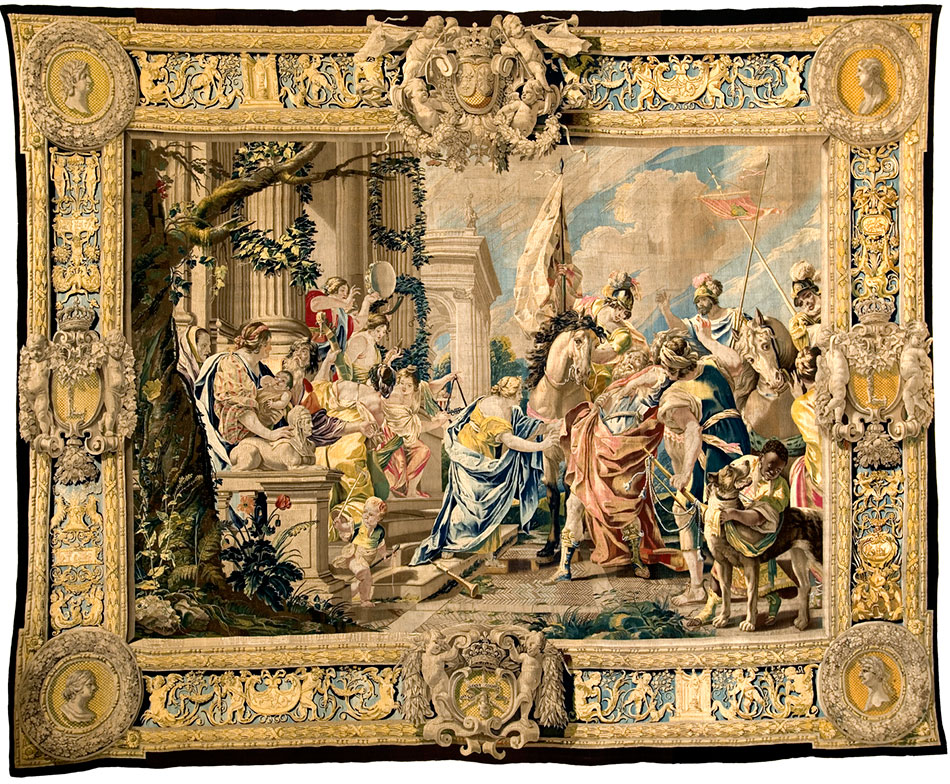
The Daughter of Jephthah, begun in the 1640s–complete by 1659. Design by Simon Vouet (French, 1590–1649), mid-to-late 1630s. Border design attributed, in part, to Jean Cotelle (French, 1607–1676), before 1643. Louvre workshop of Maurice II Dubout (French, died 1656) Wool and silk. H: 480 x W: 595 cm (189 x 234 1/4 in.) Le Mobilier National, Paris. Image © Le Mobilier National. Photo by Lawrence Perquis. EX.2015.6.7
Louis XIV as Patron
After Louis XIV assumed independent rule in 1661, he employed the literary, visual, and performing arts to glorify the monarchy and to aggrandize his public persona. As the ultimate patron and protector of the arts, he founded new academies and manufactories to serve these objectives and to promote his reputation as the arbiter of informed, refined taste. Concerning the medium of tapestry, that costly and prestigious symbol of royal power and aesthetic discernment, Louis XIV approved the centralization of the sundry Parisian weaving workshops into one large unified complex at the Hôtel of the Gobelins in the Faubourg Saint-Marcel, then a suburb southeast of the city wall. Thus, in 1662, the Royal Tapestry Manufactory at the Gobelins was established to produce extremely high-quality tapestries after accomplished designs for the adornment of royal residences. The manufactory fulfilled its mandate, to great success, over the course of the next fifty years of the reign—and indeed beyond, for the Gobelins manufactory continues to operate.
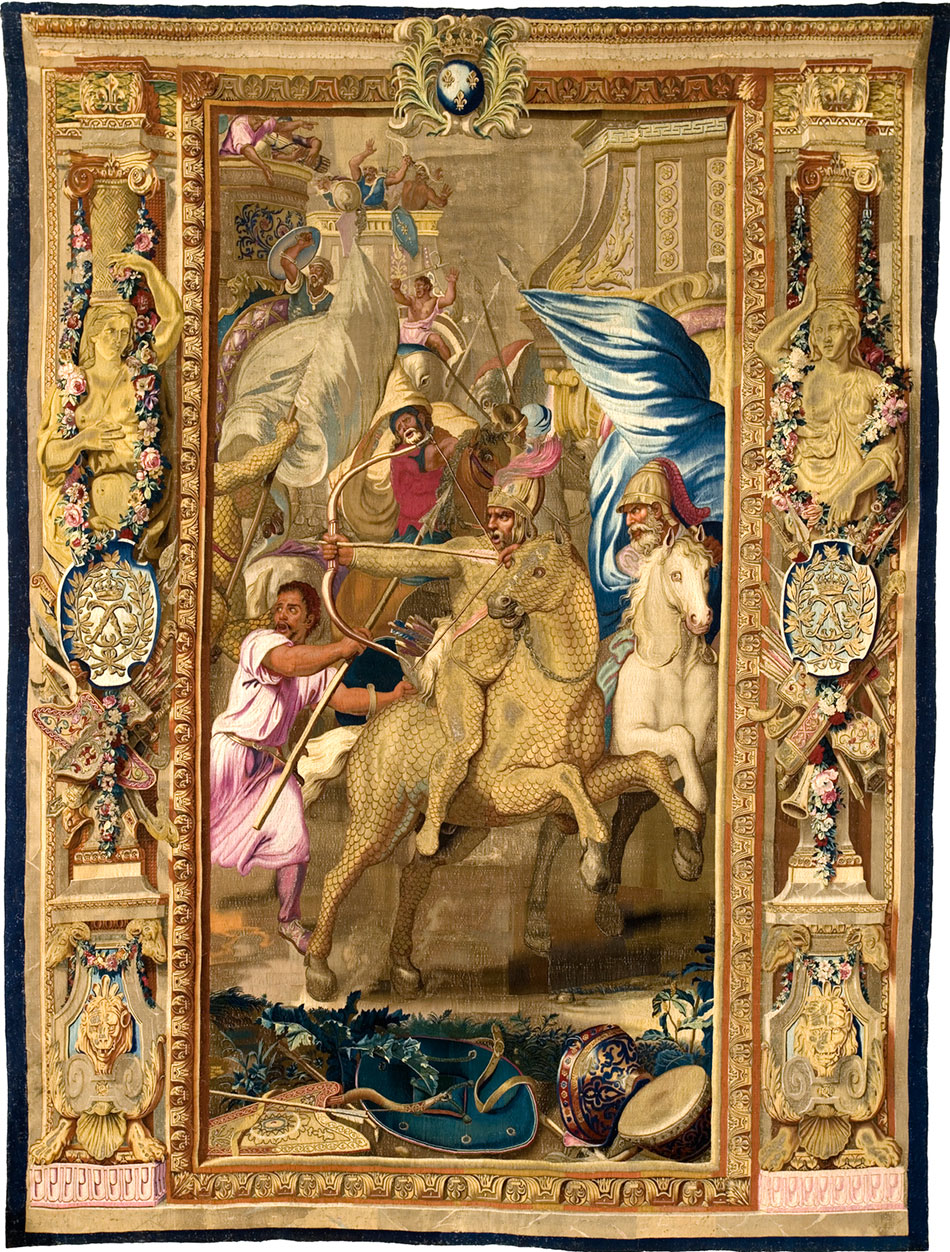
The Battle of Arbela. From The Story of Alexander. Design by Charles Le Brun (French, 1619–1690), 1669. Cartoon for the vertical loom by Louis Licherie (French, 1629–1687), Gabriel Revel (French, 1643–1712), and/or Joseph Yvart (French, 1649–1728), about 1669 Paris, Royal Furniture Manufactory of the Crown at the Gobelins, in the vertical-loom workshop of Jean Jans the Younger (Flemish, about 1644–1723) or Jean Lefebvre (French, act. until 1700), about 1670–76/77. Wool, silk, gilt metal- and silver-wrapped thread. Le Mobilier National, Paris, inv. GMTT 92. Catalogue number 10d. EX.2015.6.12
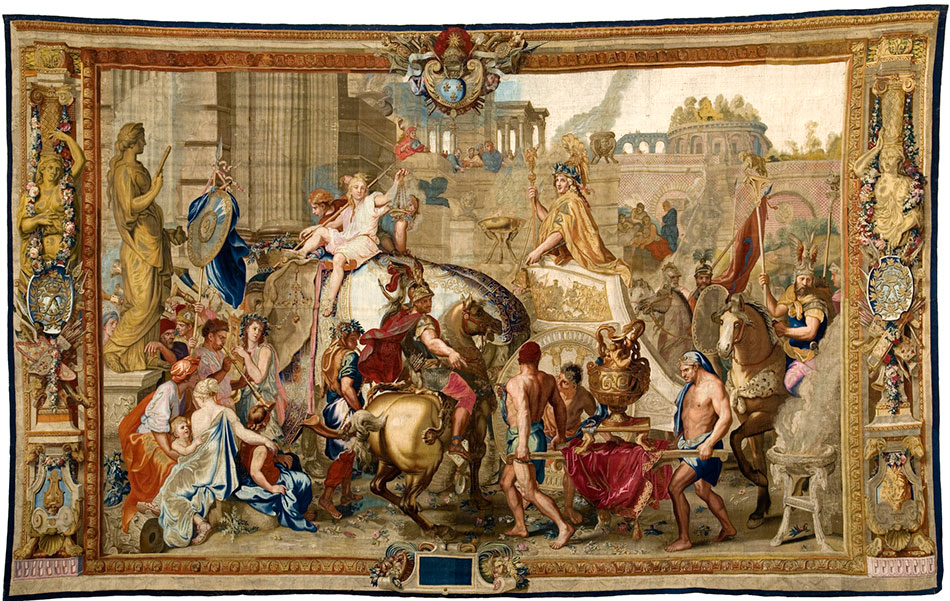
The Entry of Alexander into Babylon. From The Story of Alexander. Design by Charles Le Brun (French, 1619–1690), by 1665. Cartoon for the vertical loom by Henri Testelin (French, 1616–1695), about 1665 Paris, Royal Tapestry Manufactory/Royal Furniture Manufactory of the Crown at the Gobelins, in the vertical-loom workshop of Jean Jans the Elder (Flemish, about 1618–1691) or Jean Jans the Younger (Flemish, about 1644–1723) or Jean Lefebvre (French, active until 1700), about 1665, probably by 1676. Wool, silk, and gilt metal- and silver-wrapped thread. Presented through the generous support of Eric and Nancy Garen Le Mobilier National, Paris, inv. GMTT 82/3. Catalogue number 10e. EX.2015.6.10
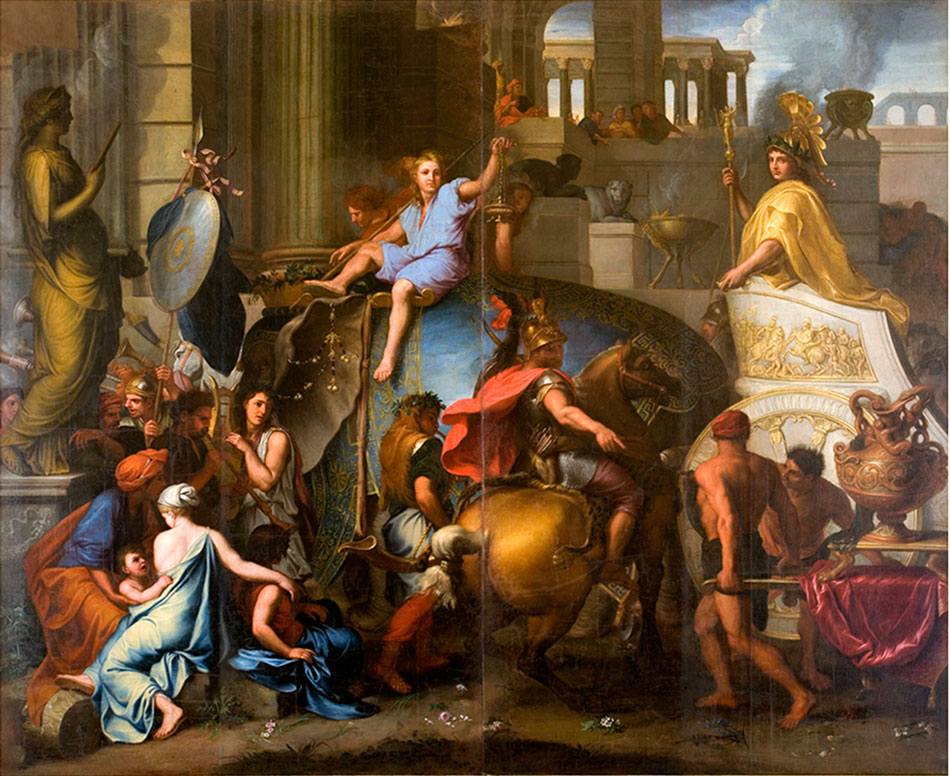
The Entry of Alexander into Babylon. Design by Charles Le Brun (French, 1619–1690), by 1665. Cartoon for the horizontal loom by François Bonnemer (French, 1637–1689), Guy-Louis Vernansal (French, 1648– 1729), Gabriel Revel (French, 1643–1712), and/or Joseph Yvart (French, 1649–1728), before 1690 Oil on canvas. Le Mobilier National, Paris, inv. Gob 704. Catalogue number 10h. EX.2015.6.11.1–.2
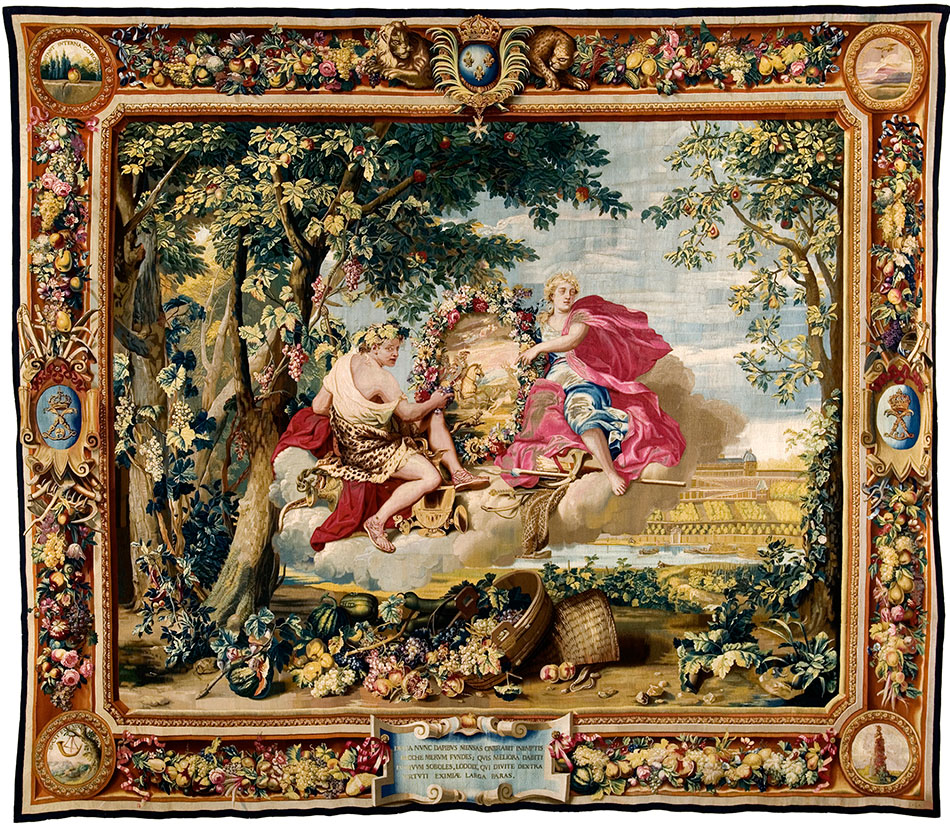
Autumn, before 1669. Design by Charles Le Brun (French, 1619–1690) with the collaboration of Adam Frans van der Meulen for the hunt scene in the medallion (Flemish, 1632–1690), 1664. Border design by Issac Moillon (French, 1614–1673), 1664. Cartoon attributed to Beaudrin Yvart (French, 1611–1690), by 1667. Royal Furniture Factory of the Crown at the Gobelins (French, founded 1662–present) in the vertical-loom workshop of Jean Jans the Elder (Flemish, about 1618–1691) Wool, silk, and gilt metal-wrapped thread. H: 480 x W: 580 cm (189 x 228 3/8 in.) Le Mobilier National, Paris. Image © Le Mobilier National. Photo by Lawrence Perquis. EX.2015.6.8
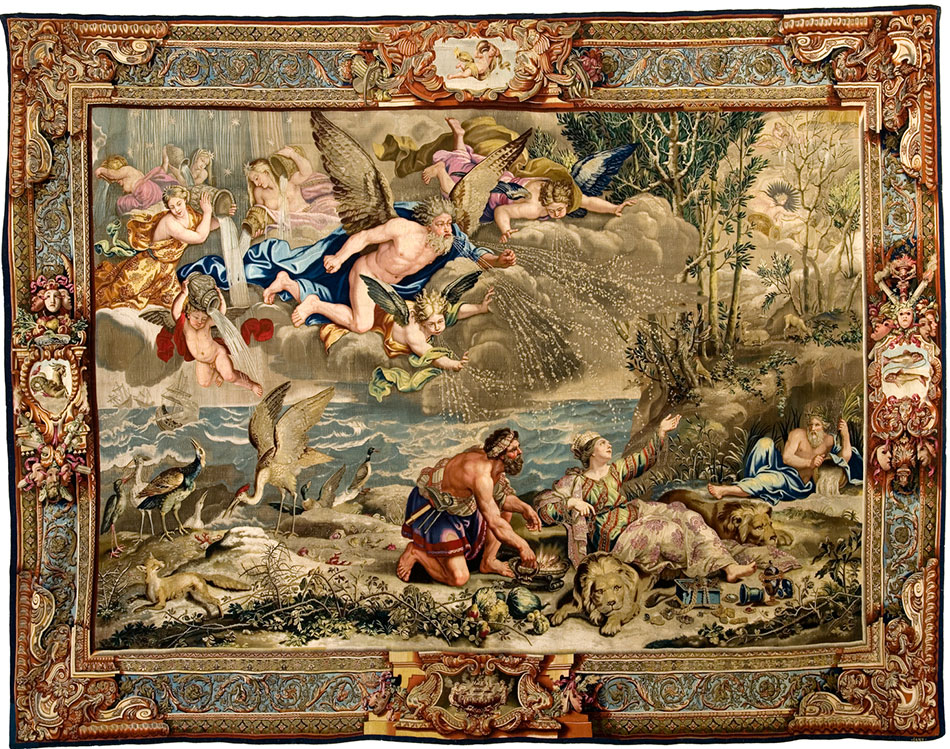
Winter, Cybele Begs for the Sun’s Return, 1692–1693. Design by Pierre Mignard (French, 1612–1695), 1677–1678. Border design by Rodolphe Parent (French, died 1694), about 1686. Cartoon attributed to Pierre Bourguignon (French, about 1630–1698) and retouched by Pierre Mignard, before 1686. Royal Furniture Factory of the Crown at the Gobelins (French, founded 1662–present) in the vertical-loom workshop of Jean Jans the Younger (Flemish, about 1644–1723) Wool, silk, and gilt metal-wrapped thread. H: 480 x W: 625 cm (189 x 246 1/16 in.) Le Mobilier National, Paris. Image © Le Mobilier National. Photo by Lawrence Perquis. EX.2015.6.13
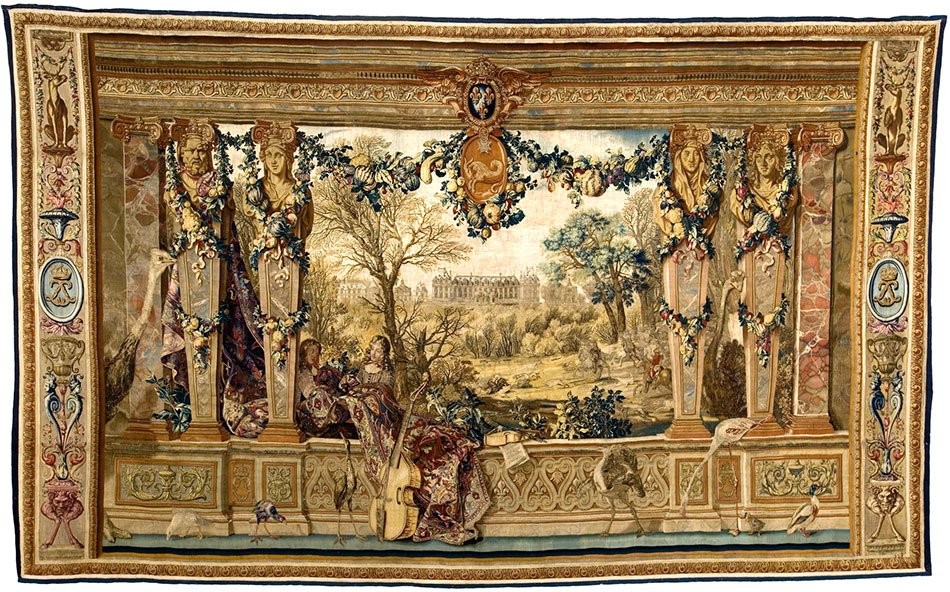
Château of Monceaux / Month of December, about 1668–1676. Design conceived by Charles Le Brun (French, 1619–1690), about 1665- by 1668. Cartoon for the vertical loom painted collaboratively by Beaudrin Yvart (French, 1611–1690), Jean-Baptiste Monnoyer (French, 1636–1699), Pieter Boel (Flemish, 1626–1674), Guillaume Anguier (French, 1628–1708), Adam Frans van der Meulen, (Flemish, 1632–1690), and others, by 1668. Royal Furniture Factory of the Crown at the Gobelins (French, founded 1662–present) in the vertical-loom workshop of Jean Jans the Younger (Flemish, about 1644–1723) or Jean Lefebvre (French, active until 1700) Wool, silk, and gilt metal–wrapped thread. H: 400 x W: 660 cm (157 1/2 x 259 13/16 in.) Le Mobilier National, Paris. Image © Le Mobilier National. Photo by Lawrence Perquis. EX.2015.6.15
Louis XIV as Collector
In the hierarchy of court art, tapestry was regarded, historically, as the preeminent expression of princely status, erudition, and aesthetic sophistication. Extraordinary resources of time, money, and talent were allocated to the creation of these works meticulously woven by hand with wool, silk, and preciousmetal thread, after designs by the most esteemed artists. The Sun King, Louis XIV of France (born 1638; reigned 1643–1715), formed the greatest collection of tapestries in early modern Europe. By the end of his reign, the assemblage was staggering, totaling some 2,650 pieces. Though these royal hangings were subsequently dispersed, the largest, present repository of Louis’s holdings is the Mobilier National of France. With rare loans from this prestigious institution, Woven Gold: Tapestries of Louis XIV explores and celebrates this spectacular accomplishment.
Organisers
This exhibition was organized by the J. Paul Getty Museum in association with the Mobilier National et les Manufactures Nationales des Gobelins, de Beauvais et de la Savonnerie.
Sponsors
We gratefully acknowledge the Hearst Foundations, Eric and Nancy Garen, and the Ernest Lieblich Foundation for their generous support.
Catalogue
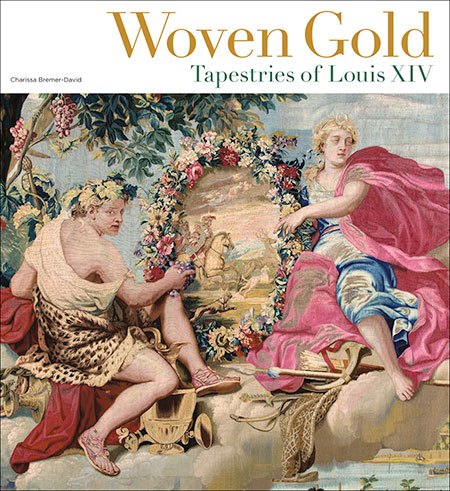 Woven Gold Tapestries of Louis XIV
Woven Gold Tapestries of Louis XIV
Charissa Bremer-David
J. Paul Getty Museum
168 pages, 12 x 11 inches
97 color and 10 b/w illustrations
ISBN 978-1-60606-461-0, hardcover
Publication Date: December 15, 2015
US $49.95, £35.00
ABOUT THE AUTHOR – Charissa Bremer-David is curator in the Department of Sculpture and Decorative Arts at the J. Paul Getty Museum. She is author of Conundrum: Puzzles in the Grotesques Tapestry Series, and French Tapestries and Textiles in the J. Paul Getty Museum (Getty Publications, 1997)
The Art of Making a Tapestry. Vídeo
Links
Related events
Mobilier National, France
J. Paul Getty Museum
